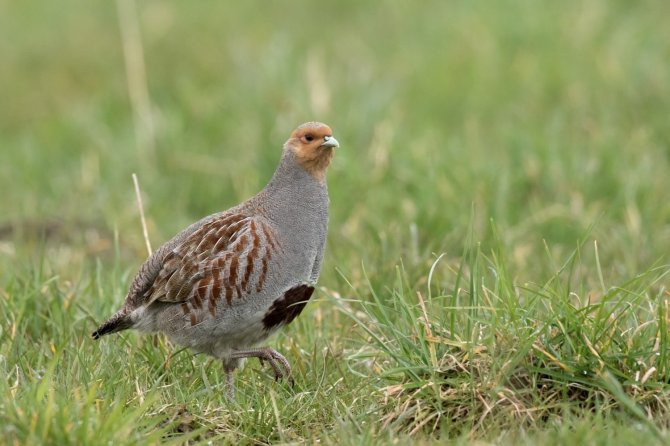Not only bees, but also birds are severely affected by neonicotinoids, a group of pesticides used in agriculture. New research by Wageningen University & Research (WUR), published in scientific journal Ecology Letters, shows how far-reaching the impact of these substances is. House sparrows, partridges, mallard ducks and many more species exposed to neonicotinoids not only have a lower survival rate, but also suffer from health problems and negative effects on their behaviour and reproduction.
Neonicotinoids are widely used insecticides in agriculture and horticulture. However, neonicotinoids usage is highly contentious because of their unintended harmful effects on various types of organisms. Researcher Elke Molenaar of the WUR says: 'There have been concerns about the negative impact of neonicotinoids on insect populations for some time, but the general consensus for many years was that birds suffered relatively little from their toxicity. Direct effects through ingestion of food were thought to be minimal. Our new study conducted by WUR in collaboration with Vogelbescherming Nederland (VBN, Birdlife Netherlands) shows that direct harmful effects do occur when birds eat food containing neonicotinoids. These effects should absolutely not be underestimated.'
Global analysis: effects on behaviour, health, reproduction and survival
An analysis of global data from nearly 50 studies on 12 different bird species shows that neonicotinoids adversely affect all investigated aspects of bird life. In these studies, birds were exposed to neonicotinoids through their food or via direct administration, and more than a thousand effects were investigated, the vast majority being negative. One example of such effects is reduced orientation, causing migrating birds to lose their course. Other effects include young chicks with birth defects, birds with abnormal blood levels and birds that lived shorter lives after exposure to these substances.
Harmful effects of all types of neonicotinoids
The study examines the effects of five different types of neonicotinoids. Two of them, imidacloprid and thiamethoxam, have already been extensively studied scientifically, while the other three - acetamiprid, clothianidin and thiacloprid - have barely been studied. Yet, according to Molenaar, the results show that the effects of the substances hardly differ between them: 'For all of them, we see negative effects.'

New neonicotinoids: urgent research required after ban on old variants
Although neonicotinoids are mostly banned within the EU for use in open agriculture and horticulture, they are still used outside of the region. There are also exceptions within the EU, whereby farmers can still get permission to use neonicotinoids via 'emergency licences'. Meanwhile, new insecticides that are chemically very similar to neonicotinoids are rapidly being developed and marketed.
VBN calls it very worrying that these harmful agents still pass the authorisation procedures and are wrongly labelled as safe for humans, animals and the environment. For example, pesticides are often used on a large scale for years, while subsequent research shows that it is not at all safe for birds and perhaps other organisms that ingest it. Thorough and independent research, both into substances that have hardly been investigated yet and into recently developed agents, is therefore urgently needed before pesticides can be authorised. Frans van Alebeek, Senior Policy Officer at Vogelbescherming, added: 'Pesticides should be tested much more extensively and rigorously for their possible side effects on humans, animals and the environment. If in doubt, pesticides should not be authorised. Things have gone wrong far too often in the past.'






